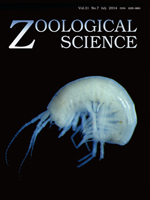BioOne.org will be down briefly for maintenance on 13 August 2025 between 18:00-21:00 Pacific Time US. We apologize for any inconvenience.

External Traces of Segmentation of the Labium in the Corixoidea (Hemiptera: Heteroptera: Nepomorpha)
